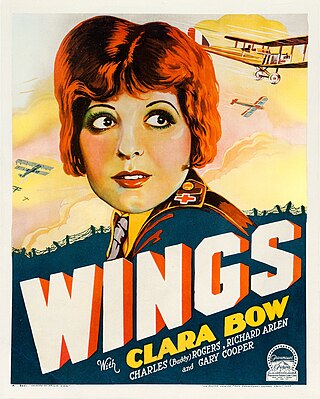
Wings is a 1927 American silent and synchronized sound film which won the first Academy Award for Best Picture. While the sound version of the film has no audible dialogue, it was released with a synchronized musical score with sound effects. The original soundtrack to the sound version is preserved at UCLA.

Adolph Zukor was a Hungarian-American film producer best known as one of the three founders of Paramount Pictures. He produced one of America's first feature-length films, The Prisoner of Zenda, in 1913.
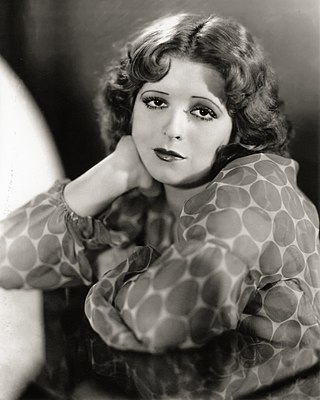
Clara Gordon Bow was an American actress who rose to stardom during the silent film era of the 1920s and successfully made the transition to "talkies" in 1929. Her appearance as a plucky shopgirl in the film It brought her global fame and the nickname "The It Girl". Bow came to personify the Roaring Twenties and is described as its leading sex symbol.

It is a 1927 American silent film directed by Clarence G. Badger, and starring Clara Bow. It is based on the serialised novella of the same name, republished in "It" and Other Stories (1927), by Elinor Glyn, who adapted the story and appears in the film as herself.

Luis Antonio Dámaso de Alonso, known professionally as Gilbert Roland, was a Mexican-born American film and television actor whose career spanned seven decades from the 1920s until the 1980s. He was twice nominated for the Golden Globe Award in 1952 and 1964 and inducted into the Hollywood Walk of Fame in 1960.

Lane Chandler was an American actor specializing mainly in Westerns.

The Famous Players–Lasky Corporation was an American motion picture and distribution company formed on June 28, 1916, from the merger of Adolph Zukor's Famous Players Film Company – originally formed by Zukor as Famous Players in Famous Plays – and the Jesse L. Lasky Feature Play Company.

B. P. Schulberg was an American pioneer film producer and film studio executive.
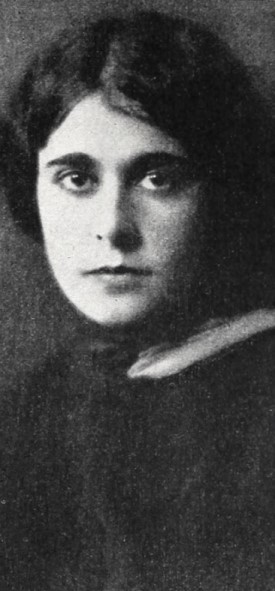
Frederica Alexandrina Sagor Maas was an American dramatist, playwright, screenwriter, memoirist, and author, the youngest daughter of Jewish immigrants from Russia. As an essayist, Maas was best known for a detailed, tell-all memoir of her time spent in early Hollywood. A supercentenarian, she was one of the oldest surviving entertainers from the silent film era.
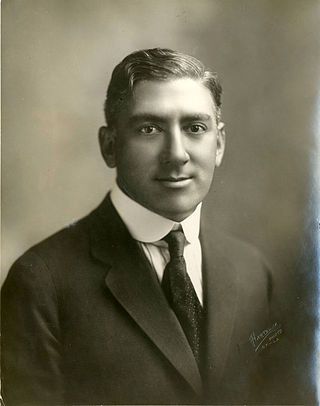
Hiram Abrams was an early American movie mogul and one of the first presidents of Paramount Pictures. He was also the first managing director of United Artists.

Children of Divorce is a 1927 American silent romantic drama film directed by Frank Lloyd and starring Clara Bow, Esther Ralston, and Gary Cooper. Adapted from the 1927 novel of the same name by Owen Johnson, and written by Louis D. Lighton, Hope Loring, Alfred Hustwick, and Adela Rogers St. Johns, the film is about a young flapper who tricks her wealthy friend into marrying her during a night of drunken revelry. Even though she knows that he is in love with another woman, she refuses to grant him a divorce and repeat the mistake of her divorced parents. Produced by Jesse L. Lasky, E. Lloyd Sheldon, and Adolph Zukor for the Famous Players–Lasky, the film was released on April 25, 1927 by Paramount Pictures.

Louis Joseph Gasnier was a French-American film director, producer, screenwriter and stage actor. A cinema pioneer, Gasnier shepherded the early career of comedian Max Linder, co-directed the enormously successful film serial The Perils of Pauline (1914). Gasnier capped his output with the notorious low-budget exploitation film Reefer Madness (1936) which though both a critical and box office failure, became a cult classic.

Wine is a 1924 American silent melodrama film directed by Louis J. Gasnier, produced and released by Universal Pictures under their 'Jewel' banner. The film, which featured Clara Bow in her first starring role, is currently classified as lost.
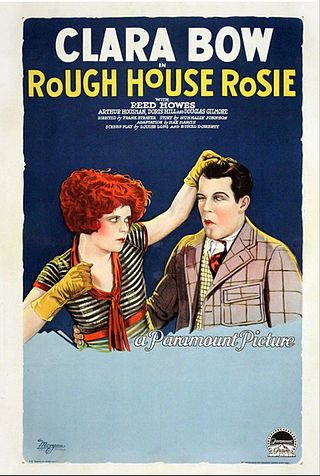
Rough House Rosie is a 1927 American silent romantic comedy film produced and released by Paramount Pictures and directed by Frank Strayer. The film is a starring vehicle for Clara Bow who was then Paramount's most popular actress. Reed Howes, a model turned actor, is Bow's leading man.
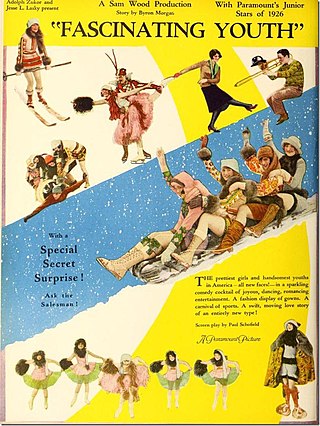
Fascinating Youth is a 1926 American silent romantic comedy film directed by Sam Wood. It starred Charles "Buddy" Rogers, along with Thelma Todd and Josephine Dunn in supporting roles. Many well-known personalities made guest appearances in the film, judging a beauty contest in one scene, and Clara Bow makes a cameo appearance in her second film for Paramount Pictures.

Clara Bow (1905–1965) was a 16-year-old living in the New York City borough of Brooklyn when she won the 1921 nationwide "Fame and Fortune Contest" advertised in Motion Picture Magazine. After submitting their autobiography with a completed entry form clipped from the magazine, finalists were given multiple screen tests. As the winner, she was cast in a small role in the silent era film Beyond the Rainbow. Although her part was eventually edited out, the contest inspired her to pursue an acting career. She relocated to Los Angeles and in 1923 signed with producer B.P. Schulberg. Over the next seven years, she would make more than 40 silent-era films, the majority of them under contract to Paramount Pictures. Her 1927 starring role in It, about an attractive and charismatic young woman, led the public to label Bow the "It girl".
David Stenn is an American television writer-producer, biographer, and film preservationist. His television credits range from Hill Street Blues to Boardwalk Empire. He is known for his biographies of Hollywood stars Clara Bow and Jean Harlow.
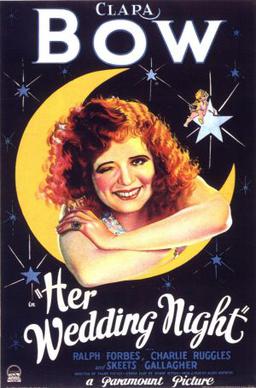
Her Wedding Night is a 1930 American pre-Code comedy film directed by Frank Tuttle and written by Avery Hopwood and Henry Myers. The film stars Clara Bow, Ralph Forbes, Charlie Ruggles, Richard "Skeets" Gallagher, Geneva Mitchell and Rosita Moreno. It was released on September 18, 1930 by Paramount Pictures. Paramount remade the film at the company's Joinville Studios in Paris in several other languages, including the French version titled Marions-nous.
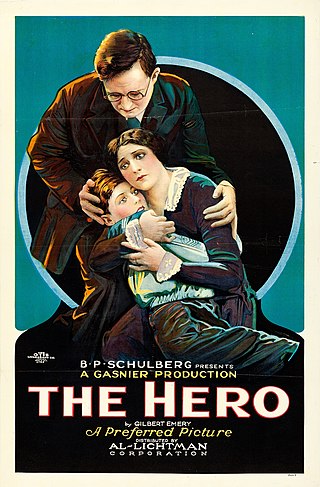
Preferred Pictures was an American film production company of the silent era. Founded in 1920 by the producer B. P. Schulberg following his departure from Paramount Pictures, it was an independent, either distributing its own films or releasing them through First National Pictures. Schulberg's partners were J. G. Bachmann and Al Lichtman, and many of the company's earliest productions featured the actress Katherine MacDonald. She was replaced as the company's leading star by Clara Bow.
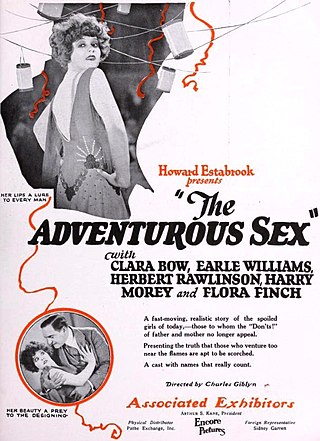
The Adventurous Sex is a lost 1925 American silent drama film that was directed by Charles Giblyn and starred Clara Bow, Herbert Rawlinson, and Earle Williams. The Howard Estabrook production was shot in studios in New York City and on location at Niagara Falls.




















